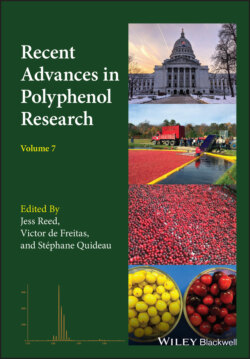Читать книгу Recent Advances in Polyphenol Research - Группа авторов - Страница 14
1.1 Introduction
ОглавлениеComplexity is ubiquitous in biological systems. The main strategy to study complexity has been carried out using a top‐down approach. Though the top‐down approach the simpler components of the complex systems are identified, and whenever possible, up to the molecular level. In contrast, supramolecular chemistry, a concept well established and recognized after the 1987 Nobel Prize awarded to Donald J. Cram, Jean‐Marie Lehn, and Charles J. Pedersen, is a bottom‐up approach (Figure 1.1). Supramolecular chemistry studies how molecules interact to form higher‐dimension entities and tends to fill the gap between “classical chemistry” and biology (Lehn, 1995).
A beautiful example of supramolecular chemistry is the structure of the metalloanthocyanin that gives color to Commelina communis (Kondo et al. 1992; Yoshida et al. 2009). An anthocyanin, a flavone, and a metal ion in a ratio 6:6:2 are organized into two parallel plans, each one containing three anthocyanins, three flavones, and one metal ion that organizes the space Figure 1.1.
There is an alternative to achieve complexity that we coin metamorphosis (Petrov et al. 2012). When a molecule (generator) is able to be transformed into other molecules by means of successive conversions and as a response to external stimuli, new molecules are formed. The complexity results from the number of the species and everything takes place at the bottom.
The pH‐dependent multistate of species of anthocyanins and related compounds is a paradigm of the metamorphosis concept; see Scheme 1.1.
